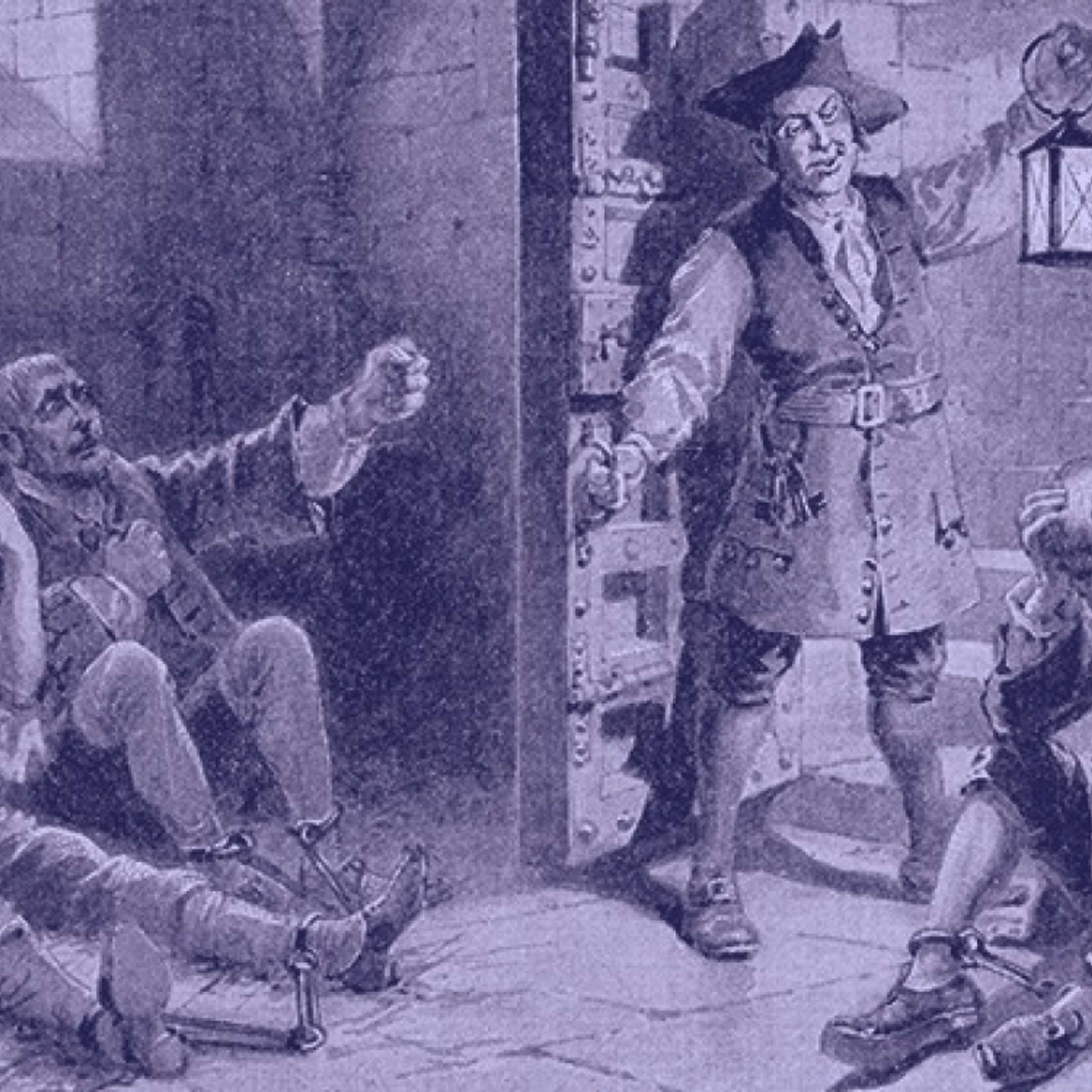
#508 | A Short History of Crime and Punishment in Britain

English Learning for Curious Minds
Deep Dive
What was the Bloody Code in Britain, and how severe were its punishments?
The Bloody Code was a series of laws in Britain that listed over 200 crimes punishable by death, including theft of goods worth more than one shilling (around 10 euros today). It was infamous for its severity, with even minor crimes like stealing a sheep or cutting down a tree potentially leading to execution.
How did justice work in early medieval Britain before William the Conqueror?
In early medieval Britain, justice was an individual affair. Victims were responsible for resolving crimes, often through agreements involving payments. For serious accusations, trials by ordeal were used, where the accused faced physical tests like being thrown into cold water or holding a red-hot iron. Innocence or guilt was determined by divine intervention, such as whether the accused sank or floated in water.
What legal reforms did William the Conqueror introduce in 1066?
William the Conqueror introduced a centralized legal system where crimes were considered offenses against the king, not just individuals. He established royal courts and common law, which applied consistent rulings across the country. He also introduced trial by jury, though early juries were composed of locals who knew the accused and based decisions on character rather than evidence.
Why did the Bloody Code fail to reduce crime in Britain?
The Bloody Code failed to reduce crime because many criminal acts were driven by necessity, such as poverty and hunger. Public executions often turned criminals into folk heroes, reducing the deterrent effect. Additionally, judges and the public grew uncomfortable with the severity of punishments, leading to leniency and reprieves.
How did Enlightenment thinkers influence the British justice system?
Enlightenment thinkers like Cesare Beccaria argued that punishments should be proportionate to crimes and that certainty of punishment, not severity, deters crime. This shift in thinking led to reforms, including a decline in capital offenses and the rise of imprisonment as a means of rehabilitation rather than mere punishment.
What role did transportation play in the British justice system?
Transportation became a popular alternative to execution in the early 19th century, with criminals sent to distant colonies like Australia. It was seen as a way to punish offenders by removing them from society and deterring future crimes. However, it was expensive, logistically challenging, and eventually fell out of favor as prisons gained prominence.
How did the purpose of prisons evolve in Britain?
Prisons evolved from holding cells for those awaiting trial or execution to institutions focused on rehabilitation and moral reform. The introduction of penitentiaries and solitary confinement aimed to encourage reflection and reformation. However, overcrowding and poor conditions often undermined these goals.
When was the last execution in Britain, and for what crime?
The last execution in Britain took place in August 1964, when Owen Evans and Peter Allen were hanged for robbing and murdering a man. This marked the end of capital punishment in Britain, which had been used for over a thousand years.
Shownotes Transcript
In part one of a three-part mini-series, we'll explore the fascinating history of crime and punishment in Britain, from medieval justice to the infamous Bloody Code.
In this episode, you'll learn how the harsh consequences for even minor crimes evolved over the centuries, leading to the modern justice system.
- Jean Valjean's punishment in Les Miserables vs. Britain.
- The Bloody Code and its severe punishments.
- Justice system in early medieval Britain.
- William the Conqueror's legal reforms in 1066.
- Development of trial by jury in Britain.
- Punishments in the late medieval and Tudor periods.
- Rise and fall of the Bloody Code.
- Enlightenment thinkers’ impact on justice.
- Shift towards imprisonment and rehabilitation.
Full interactive transcript, subtitles and key vocabulary available on the website: https://www.leonardoenglish.com/podcasts/crime-punishment-britain
---
You might like:
🔓 Unlock bonus episodes, interactive transcripts, subtitles & vocabulary lists
📹 A look inside Leonardo English membership
🧑💼 Demystifying Business English Course
⚡️ How To Use Podcasts Like A Boss To Learn English
✍️ Free English Grammar Checker
---
Keywords: Learn English, vocabulary, lessons, idioms, aprende inglés, idiomas, aprender inglês, apprendre l'anglais, imparare l’inglese, ingilizce öğren,英語を習う, تعلم الإنجليزية